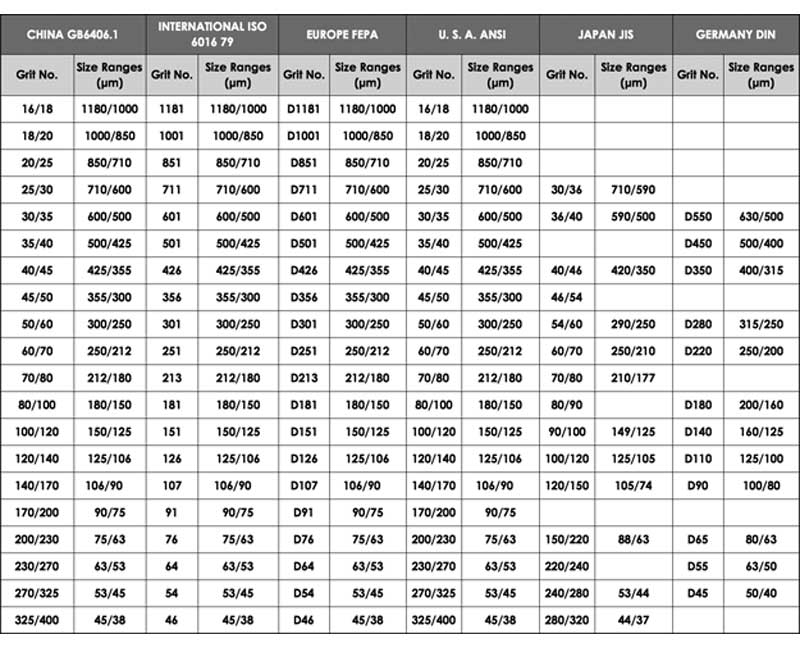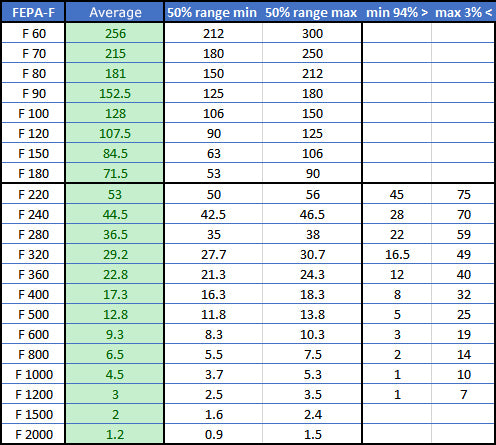
But in the fine grits, the difference is huge. The first rule of auto body repair is that you should start with the least aggressive sandpaper you can that will still get the job done. The lower the number, the coarser the sandpaper. In general, grit numbers range from around 40 to 4000 and up.

The water acts as a lubricant and anti binder agent. The first step is choosing a sandpaper with the right grit. Wet the paper and keep the surface or paper wet with a bit of water. For painting and decorating purposes in the paint preparation stage, normally the range used is 80 to 360 grit. Remember: The higher the number Small grains and finer sandpaper. If your surface is an intricate design, you are better advised to use medium course grade to protect the carved design beneath the paint. The coarse grit removes surface roughness and eliminates debris that impends paint flow when painting. There are lots of different types of sandpaper starting at 30 grit which is classed at extra coarse going all the way to 800,000 grit which is nano fine. Medium coarse sandpaper is graded between P80 and P180 on the grit level and offers a good level of paint removal, which is less likely to destroy the underlying surface. Rough surfaces such as metal, floor wood, deck, rust metal, and hardwood should be sanded using coarse grit sandpaper (40-60grit). As can be seen, it is only when using finer grits that the difference need to be considered. Answer (1 of 4): Black emery wet/dry sand paper in 240, 360, 400 and finally 600 grit. When smoothening plaster, sand the surface with a fine-grit sandpaper (80-120grit). Sandpaper grit ranges can be divided into two types: micro and macro grit sandpapers.

If there is a P in front of the grit number, for example, P300, then you know it follows the FEPA grading system. Sandpaper is labeled on the back with the grit size. What it shows is two colored sections, a section where the difference is small enough to not matter too much (green) and a section from where difference is huge and must be thought of (red). CAMI is used mainly in North America and FEPA in Europe. The below table is originally from Wkipedia, but with some slight changes. Maximum STOCK REMOVAL for each grit This chart is meant to give a machine operator a rea-sonable starting place for stock removal per sanding. Sometimes, you will find sandpaper measured in microns (Greek system), but the US grit. The sandpaper comes in degrees of grit sizes from coarse (180) to fine (1200 or greater). Aluminum oxide is the most commonly used and the least expensive.

The effort required to polish the finish of referenced products is equivalent to a finish left behind by the above grit numbers.Table comparing sandpaper grit standard in Europe and USA The most common types of jewelry sandpaper is made from emery, silicon carbide, and aluminum oxide. We realize that choosing sharpening products is a hotly debated subject. (Because “depth of sanding scratches” differ from product to product, the above guide is not necessarily equivalent to speed of material removal in volume. Some may have access to a wider range of sandpaper grits than appear on this chart. Time required to completely cover and sand within a given area is equivalent to the speed of above grit number in traditional abrasive paper.


 0 kommentar(er)
0 kommentar(er)
